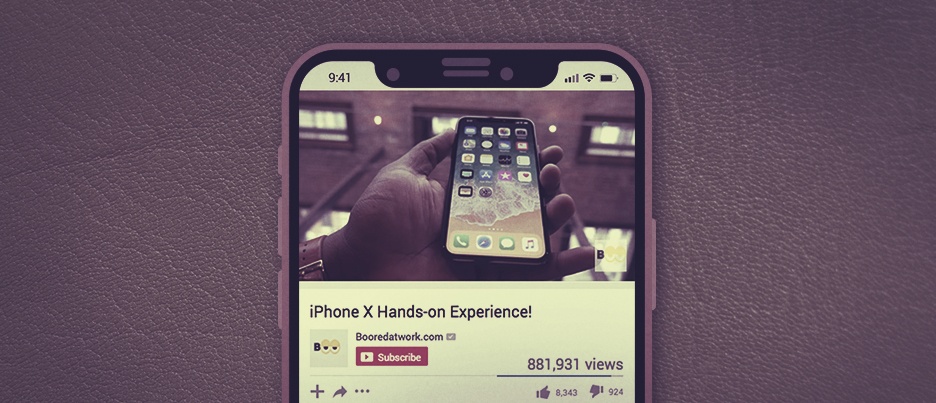Apple’s iPhone X syncs with Digital Influencers

I didn’t camp out for the new iPhone X, but I was first in line to explore their product rollout strategy.
Apple tapped into digital influencers for the iPhone X announcement. What might seem like simple strategy on the surface, actually shook the tech and marketing spaces as Apple may have strategically lost a few press friends to reach an entirely different audience.
When the annual iPhone review day came around this year, the regulars of traditional tech press published their first impression reviews, as per usual. However, for the first time in nine iPhone rollouts, a select few digital influencers had test units first and published their reviews the day before. This was not a shipping error.
Apple understands the power of attention, and digital influencers control a majority of valuable online attention. Although Apple has steadily snowballed the smartphone market since its 2007 introduction of the original iPhone, Android still controls 65 percent of the market share amongst millennials and teens. And, that’s not just a hunch. According to a 2015 study, men 45 and older spend the most on Apple products, while women aged 25 to 34 and men aged 18-24 spend the least.
To maximize the potential in these lagging markets, Apple gave first access to a select group of popular YouTubers, including UrAvrgConsumer, Booredatwork, Fashion and Highsnobiety, boasting a combined total of 2.5 million subscribers. But, community size is only a qualifier. Each of these influencers offer a valuable voice in conversations outside of Apple’s usual tech community. As examples, Highsnobiety is a sneaker vlog and Fashion is focused on style content. In order to expand its market share, Apple deliberately chose to go outside of its typical community of tech publications (i.e. Wired, The Verge, Engadget) and their audiences of predominantly middle-aged men, to permeate a variety of non-traditional communities and corresponding markets.
Traditional tech press still had a chance to share a review, but only had 24 hours to try the phone and then publish on Day 2. This did not go over well. Longtime tech writer John Gruber heatedly remarked, “Thank god Apple seeded Mike Allen with an iPhone X review unit. Such great insight from his f******* 19-year old nephew, the emoji expert.” What Gruber might not understand, though, is that his writing voice and blog audience of men 35-55 falls within the market segment that Apple already dominates. The “19-year old emoji expert” is the consumer that Apple needs to convert to a lifelong, brand loyal customer.
Influencers are culture hackers. As early adapters, they not only start the conversation, but share a respected opinion in a given space. It’s no coincidence that the influencer review videos were published before any negative feedback could find its way to the headlines from the tech outlets. Apple controlled the conversation from the beginning by tapping into the YouTube influencers who knowingly focused more on the iPhone X’s aesthetic and lifestyle appeal than the software and technical capabilities. While traditional tech publications are still an incredibly vital resource for creating buzz and sharing information, Apple clearly did an end-run around them as a way of both controlling the narrative and reaching a younger demographic.

